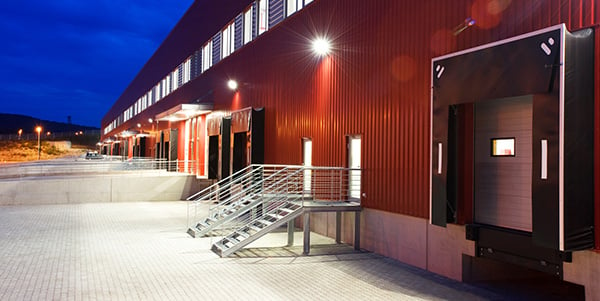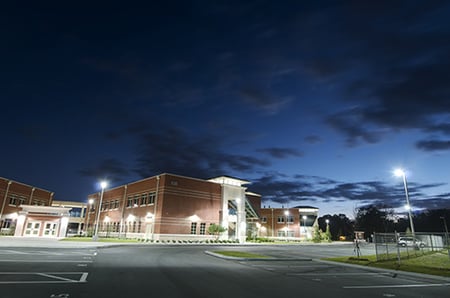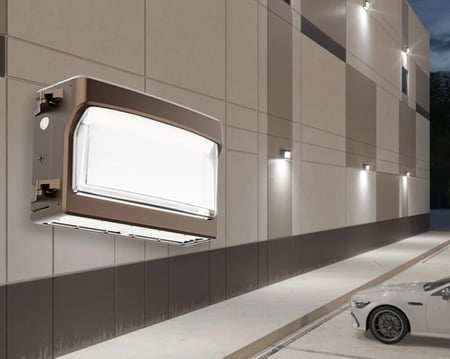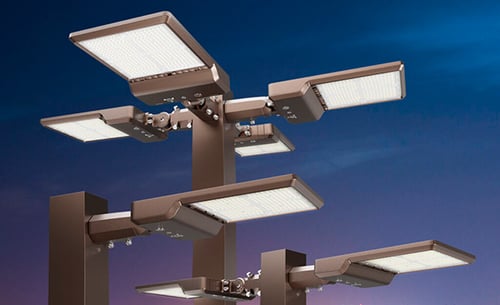 LED outdoor lighting projects involve more than just picking out fixtures; they require you to understand the client’s lighting goals, safety codes, and the surrounding environment.
LED outdoor lighting projects involve more than just picking out fixtures; they require you to understand the client’s lighting goals, safety codes, and the surrounding environment.
Whether it's ensuring a parking lot is lit to perfection or a building's exterior shines just right, knowing your aims and the regulations that govern your project is paramount. Here are some critical things to consider before starting your outdoor LED lighting project.
#1 Understand Your LED Outdoor Lighting Goals
Before choosing fixtures, you’ll need to know the purpose and goal of the lighting. Neglecting to plan beforehand could result in a lot of wasted time and money. If you don’t follow local regulations or you install the wrong light for the desired purpose, you might be back at square one.
So how should you plan? Get information around desired light levels and the installation area. Parking lot lights, for example, are governed by regulations on factors like light wattage and light trespass. Lights that are too bright might have to be removed.
#2 Select the Right Type of LED Outdoor Lighting Fixtures
When it comes to choosing the right type of outdoor lighting, distributors, energy professionals, and owners have a lot to consider, from ensuring safety and security to meeting aesthetic goals.
The most common types of exterior lighting include:
- Pole Lights: Designed for parking lots and large outdoor areas, these fixtures are pole-mounted and vary from 100 to 500 watts, available in color temperatures of 3000K, 4000K, and 5000K.
- Floodlights: Used to illuminate specific areas, these can be mounted on flat surfaces or poles and are common in large projects like stadiums and airport parking lots, offering high brightness and security.
- Wall Packs: Wall-mounted lights for building exteriors and parking lots, known for their ease of installation and compatibility with photocell technology for energy efficiency.
- Landscape Lighting: Intended for pathways, garden features, and architectural details, these fixtures enhance aesthetics and security.
#3 Consider the Environment Where You’re Installing
When you’re planning lighting for a new parking lot, you might not consider talking to the landscapers.
But you probably should.
 Tree growth can obscure that light you worked so hard to plan. In a decade or so, the landowner might be forced to cut down the trees that have now grown taller than the light poles. And not only can obstructed lighting lead to dark spots, but it can also be costly for the building owner or business. Poor lighting can lead to accidents and worker’s compensation claims. And it can also violate building codes.
Tree growth can obscure that light you worked so hard to plan. In a decade or so, the landowner might be forced to cut down the trees that have now grown taller than the light poles. And not only can obstructed lighting lead to dark spots, but it can also be costly for the building owner or business. Poor lighting can lead to accidents and worker’s compensation claims. And it can also violate building codes.
You can’t control where trees are planted after your lights are installed, but a short talk with the landscaping crew on the same job you’re on can save your customer a lot of trouble down the road.
Trees aren’t your only environmental concern. If you’re lighting the area near a flag pole, for example, you’ll need to follow the U.S. Flag Code, which stipulates that the flag is to be sufficiently illuminated when displayed at night. Though the Flag Code doesn’t specify brightness or light temperature, it’s a general practice to light the flag in warmer colors and just brightly enough to be seen so as to comply with light trespass regulations.
#4 Review Safety Codes and Light Trespass Regulations
It’s also important to consider how your outdoor light fixture choices affect neighboring properties and the environment. One thing to check is your local regulations on light trespass, or the unwanted spillage of light beyond a property line, which can contribute to light pollution. Local ordinances and codes set strict limitations on light trespass to avoid disturbing nearby residents. Some regulations, for instance, stipulate that light trespass over the property line can’t exceed a half a foot candle.
Another thing to watch out for is the use of too-bright floodlights, sometimes called “glare bombs.” These are too powerful for the area they’re installed in and could light up the whole street instead of just the intended parking lot or building exterior — which will certainly violate your local ordinances.
Be sure to check these guidelines on light trespass before installing:
- ASHRAE: The American Society of Heating, Refrigerating and Air-Conditioning Engineers publishes energy usage guidelines, including for lighting.
- IES: The Illuminating Engineering Society also publishes standards for outdoor lighting.
- CIE: The International Commission on Illumination publishes international regulations for outdoor lighting.
- DarkSky.org works with regulatory bodies to advocate for minimizing light pollution and trespass into the skies. You can review their guidelines here.
 You’ll also have to consider ordinances that require your parking lot or exterior building lights to dim or turn off after business hours. Additionally, ordinances regulate transition zones in parking garages. They’re focused on making sure visitors’ eyes can adjust smoothly as they move from bright sunlight to the interior's dimmer environment, and vice versa. These areas need to be well-lit during the day so drivers and pedestrians can see clearly and navigate safely. But at night, those same areas can be darker. Specific codes dictate how the lighting should be toned down in these transition zones after dark, balancing safety with eye comfort.
You’ll also have to consider ordinances that require your parking lot or exterior building lights to dim or turn off after business hours. Additionally, ordinances regulate transition zones in parking garages. They’re focused on making sure visitors’ eyes can adjust smoothly as they move from bright sunlight to the interior's dimmer environment, and vice versa. These areas need to be well-lit during the day so drivers and pedestrians can see clearly and navigate safely. But at night, those same areas can be darker. Specific codes dictate how the lighting should be toned down in these transition zones after dark, balancing safety with eye comfort.
LED lighting controls with time-of-day settings can handle most (if not all) of this for you, so you can effortlessly conform to regulations.
#5 Beware of B.U.G.
These aren’t the small, biting insects you swat in the summer. It’s an acronym for three factors that could derail your outdoor lighting project:
- Backlight: Light directed behind a fixture
- Uplight: Light directed upward
- Glare: The amount of light emitted from the fixture at a high angle
B.U.G ratings are usually part of the municipal codes governing your project, and they vary greatly by city, so you’ll have to consult them before choosing your fixtures, as they could eliminate some of your options.
#6 Consider Outdoor LED Light Fixture ROI
 When it comes to outdoor LED lighting, there's a golden rule worth remembering: Investing a bit more up front can save you a ton of hassle and cash down the road.
When it comes to outdoor LED lighting, there's a golden rule worth remembering: Investing a bit more up front can save you a ton of hassle and cash down the road.
LEDs are tough and long-lasting, but they’re not all created equal.
Choose a poor-quality LED outdoor fixture, and it might not be engineered to stand up to the sun’s heat. Over time, inadequate heat management can cause the light’s quality to depreciate. An example of this is when cheaper fixtures with a bronze finish lose their coating after years of being in the sun, revealing a discolored, uneven aluminum surface beneath.
The phosphor component within LED lamps can also degrade over time, especially if the fixture is not designed to counteract heat effectively. This degradation can alter the light's color, often resulting in an unwelcome blue hue from the blue-pump LED chip. This color shift indicates poor LED chip quality.
High-quality LED lights, on the other hand, are engineered with advanced heat sinks and materials designed to withstand and dissipate the thermal load experienced during the day. So, when you consider outdoor LED lighting, remember that saving a couple bucks up front may not always be worth it in the long term.
When it comes to an outdoor LED lighting project, a little foresight can save you and your clients plenty of time, money, and frustration. Installing without the proper planning is a recipe for disaster. So, consult your local codes and ordinances, be aware of your surrounding environment, and invest in quality LED fixtures that will look great for years to come.
Need help selecting the right LED outdoor lighting fixtures for your project? Browse our commercial outdoor LED products.

